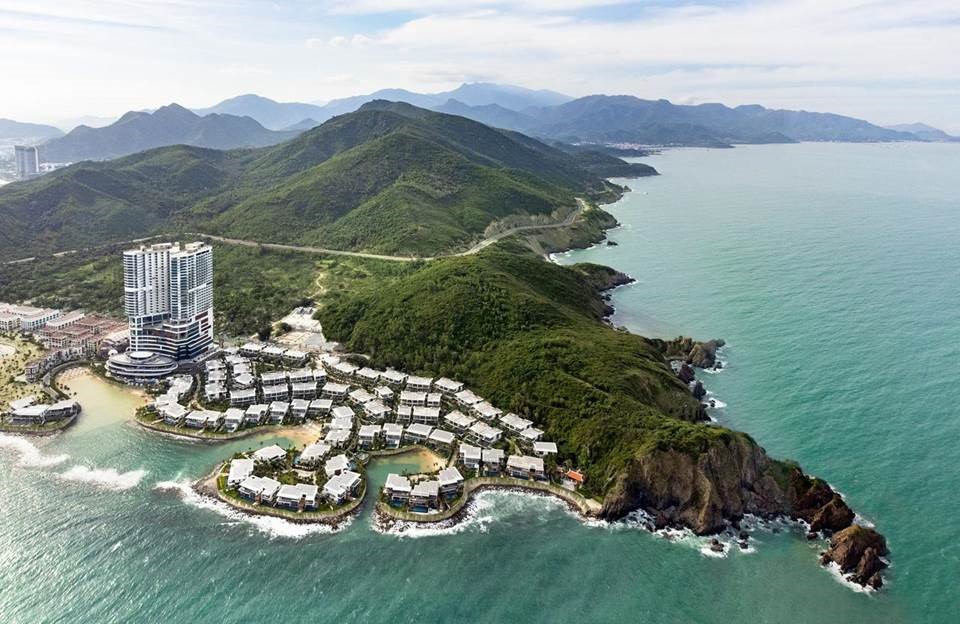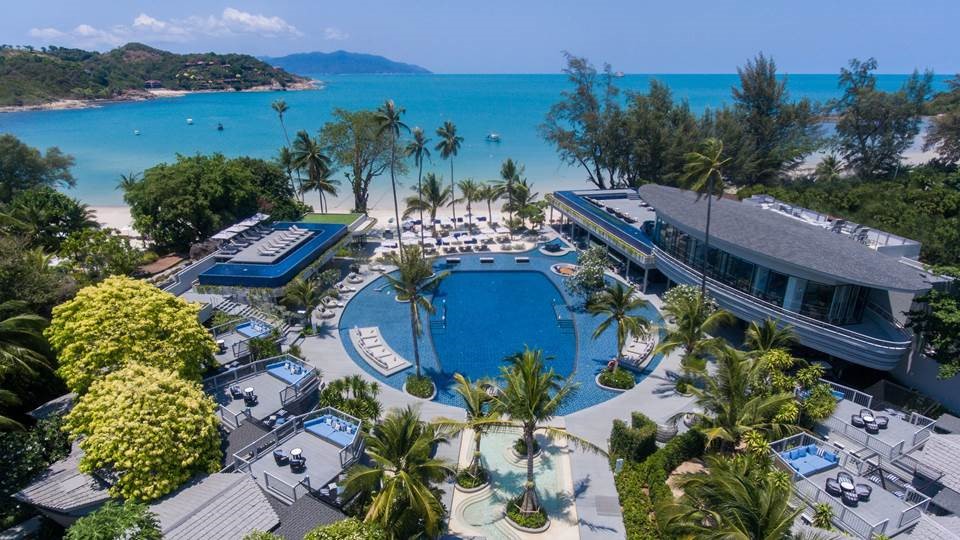Palma de Mallorca (March 11, 2025) Meliá Hotels International’s 2024 results reflect the consolidation of the general growth trend in the industry, with a healthy return to normalization after two years of accelerated growth. For Meliá, this trend translated into a 4.4% increase in revenue excluding capital gains (€2,013 million) and a 10.7% improvement in Average Revenue Per Available Room (RevPAR), 75% of which was attributed to the improvement in the average rate during the year, while occupancy levels remained slightly below those recorded in 2019, leaving room for further growth.
The Group’s EBITDA also surpassed expectations, reaching €575.4 million (€533.6 million excluding capital gains), and consolidated profit (€162 million) improved by 24.5% compared to 2023. The Company also enhanced its EBITDA margin to 26.5% (+129 basis points) thanks to improvements in average rates, efficiency, and cost control, while also boosting customer satisfaction. The Group achieved an excellent average Net Promoter Score (NPS) of 59 across its entire hotel portfolio, nearly 6 points higher than the previous year’s score of 53. NPS improvements were recorded across all brands, with a significant increase of 10 points for the Paradisus by Meliá brand, which made a major contribution to this outstanding satisfaction result, exceeding the industry average.
On the financial front, Meliá successfully reduced its Net Financial Debt by nearly one-third (- €391 million), bringing it to €772.7 million. This achievement was driven by two asset rotation operations with a net value of approximately €300 million, and particularly by the generation of around €100 million in cash—after paying €21 million in dividends. As a result, the Group reached its goal of positioning its Net Debt/EBITDA ratio at 2.2x, a level similar to pre-Covid figures.
Meliá’s strategy to build a more resilient and profitable business has relied on several levers to ensure sustainable and qualitative growth. These include expansion into both traditional destinations and emerging markets such as Albania, Saudi Arabia, and the Indian Ocean, as well as a focus on the luxury segment, where premium and luxury brands now represent 64% of the portfolio and 80% of the pipeline. Additionally, revenue maximization is supported by direct channels like Melia.com and the revamped Meliá App, which now account for 50% of total centralized sales. This allows for the increased personalization demanded by the market, leading to higher revenue per customer and improved satisfaction and loyalty indices.
The personalization strategy is further reinforced by the MeliáRewards Loyalty Programme, with over 17 million members contributing 85% of the revenue from direct channels, and Club Meliá, with more than 30,000 members.
At the same time, the Group has reaffirmed its commitment to Travel Agencies, Companies, Meeting Planners, and Tour Operators by introducing a new, more intuitive and faster MeliaPro website—Meliá’s B2B digital platform for professionals—equipped with the latest technology. In 2024, sales through MeliaPro increased by 21%, surpassing the growth of the B2C channel, Melia.com, which grew by 19%. This highlights the positive contribution of various intermediary segments to Meliá’s sales, which the Group has always considered essential allies, or ‘guardian angels,’ of its commercial success. The Corporate (business travel) and Tour Operation segments were the fastest-growing in 2024, followed by the MICE (Meetings, Incentives, Conferences, and Exhibitions) segment.
Both the MICE and Corporate segments continued to grow after completing an accelerated recovery, showing impressive growth in 2024, with a 23% increase in total hotel revenue compared to the previous year. Demand also continues to rise, with 10% more quotation requests received in 2024 than the previous year, and excellent expectations for 2025, with 16% more confirmed business for this year compared to the same period last year.
By destination, the MICE segment showed strong growth in hotels in LATAM, the US, and Asia Pacific (+50%), followed by urban hotels in Europe (+25%) and Spanish holiday resorts with meeting facilities (+17%). Caribbean resorts saw a more moderate positive evolution.
First quarter outlook
With current visibility, the Company remains optimistic about the promising outlook for the first quarter of 2025, confirming the strength of demand, the normalization of the pace of growth, and a trend towards earlier bookings. Following a positive year-end, Spanish urban hotels expect revenue growth driven by new openings and repositioned properties in 2024, with forecasts pointing to the normalization of rate growth and stable occupancy levels.
Projections and bookings suggest particularly strong performance in the Canary Islands in the first quarter, along with a healthy booking trend in the Caribbean. Additionally, the Black Friday campaign, which serves as an early indicator for the season, recorded a 26% increase in sales and a 5% rise in average rates, providing the Group’s hotels with a solid start to the year.
Qualitative growth
As a global leader in holiday tourism, the Group continues to prioritize expansion in destinations along its ‘holiday axis,’ which spans from the Caribbean and LATAM to Southeast Asia, including the Mediterranean and the Middle East. In 2024, Meliá signed 34 new hotels in emerging destinations across Europe, such as Albania and Malta, Southeast Asia, including Thailand and Vietnam, as well as in the Caribbean, Latin America, and Spain. In both Albania (with over 4,000 rooms in operation and in the pipeline) and Vietnam (with 8,185 rooms), Meliá is already the leading hotel operator in these countries.
The Group’s expansion pipeline currently includes 72 hotels with over 13,000 rooms (all under management contracts, except for one lease), and it expects to sign at least 25 new establishments by 2025. The focus will be on the southern and eastern Mediterranean, with significant growth in the Americas, including new openings in Mexico and the Dominican Republic. In the latter, Meliá recently opened ZEL Punta Cana, the first hotel of the brand created in collaboration with Rafa Nadal. Additionally, Meliá signed two Innside hotels in Punta Cana in 2024 and plans to open at least two new hotels in new destinations for the Group, such as Puerto Plata, while also reestablishing its presence in Jamaica and continuing its expansion in Argentina.
In Argentina, Meliá has recently announced the signing of a new hotel in Buenos Aires under its luxury brand, The Meliá Collection. The Casa Lucía hotel will follow in the footsteps of the successful Gran Meliá Iguazú, which has been named the best resort in Argentina for the third consecutive year. In addition, the Group expects to add more hotels in Argentina in the coming months. Meliá has also announced the signing of the new Meliá Phu Quoc Forest Bay in Vietnam and the Meliá Venezia Lido in Venice.
Repositioned and revalued portfolio
Meliá’s expansion strategy has, for several years, maintained a strong focus on the Premium segment, which includes three of its brands: Meliá Hotels & Resorts, ZEL, and INNSiDE by Meliá, as well as the Luxury segment, which includes Gran Meliá, Paradisus, ME by Meliá, and the newest addition, The Meliá Collection. This strategic commitment, which has successfully capitalized on the growing demand for quality, exclusivity, and experiences, now accounts for 64% of the Group’s operating hotels and 80% of the 70 hotels signed for future incorporation (expansion pipeline).
If only hotels with Luxury brands are considered, they represent 15% of the rooms but contribute 40% of the operational revenue. Moreover, one out of every three new openings will feature one of the Luxury brands. This evolution has also led to a new segmentation of clientele, as 42% of the guests at Meliá’s luxury hotels now come from so-called ‘high-value markets,’ which are less sensitive to price, such as the US and the Middle East. This shift contributes to a more profitable and resilient model, as these markets are less dependent on economic cycles.
In parallel with its qualitative expansion, Meliá has undertaken a process of repositioning its assets within its Premium and Luxury brands. Over the past two years, together with its partners, the company has repositioned a total of 40 hotels, with an investment of more than €400Mn. The impact of this repositioning is evident in the improvement of the average rate, which has increased by approximately 70% for the repositioned holiday hotels and 40% for the city hotels.
This strategic focus on the upper and luxury segments, alongside the renovation and repositioning of hotels, has also contributed to increasing the value of the Group’s assets. In collaboration with CBRE, the Group conducted a new valuation of its real estate assets as of 31 December 2024, confirming that the value of the assets owned by the Group has reached €4,724Mn. Additionally, €561Mn is attributed to the company’s stakes in other assets held in joint ventures. The total value of these assets (€5,285 million) reflects a +13.88% increase over the €4,641 million portfolio valuation in 2022. The average value per room (€265,850) has also risen by +11.9%.
Currently, almost all the Group’s hotels, whether owned or in Joint Ventures, have been refurbished and/or repositioned in alignment with this strategy. Meliá now owns 91 assets, including hotels and other properties, spread across Spain, the Dominican Republic, Mexico, Europe, and South America.
Hotel business: evolution and outlook by region (4th quarter 24 and 1st quarter 25)
ASIA
At the end of the year, China continued to face the challenges experienced throughout 2024. The domestic customer remained the primary contributor, although international demand— particularly in the Company’s hotels in Chengdu and Xian—showed signs of recovery.
Looking ahead to 2025, a moderate increase in demand is expected. Domestic demand is anticipated to be concentrated around festive seasons, with rate stability but volume growth and later bookings. This trend aligns with the broader economic uncertainty, including slower-than-usual growth, the real estate crisis, and risks related to the ongoing trade war with the US. As for international demand, the recovery of air capacity is expected to continue.
Southeast Asia saw a positive fourth quarter, driven by international customer contributions, improved local connectivity, and events. By country, Vietnam experienced a significant increase in travellers, particularly from high-purchasing power markets such as India, South Korea, and China. Thailand continued to lead in international arrivals, supported by new routes and aggressive promotional campaigns. Both countries showed notable improvements in occupancy compared to the previous year and, to a lesser extent, in average rates. Meanwhile, in Bali, the historic Meliá Bali was closed due to a complete refurbishment.
Looking ahead to 2025, strong international growth is expected, particularly in Thailand and Vietnam, both of which are anticipated to see double-digit RevPAR growth compared to the previous year. This growth will primarily stem from average price increases, though solid occupancy growth is also expected. Additionally, regional demand will be boosted by the reactivation of major events and the improvement of air routes.
SPAIN
The fourth quarter saw continued positive results for urban hotels, maintaining the strong trend observed throughout the year. Madrid and Barcelona stood out due to major festivals, fairs, and events, while other cities also showed positive performance in both occupancy and rates. Holiday hotels also experienced double-digit rate increases and higher occupancy compared to the same period last year, with particularly strong results in the Canary Islands, as well as extended seasons along the coasts and in the Balearic Islands. The Melia.com direct channel and tour operators also performed well, with double-digit growth in both the UK and Spanish markets.
Looking ahead to the first quarter of 2025, Meliá’s urban hotels in Spain are set to benefit from new openings and repositioning efforts carried out throughout 2024, expecting a revenue increase. This is accompanied by a more moderate rise in average rates, while occupancy levels are expected to remain stable. In terms of city performance, Madrid is expected to lead, with strong sales already booked in key segments like MICE and Corporate. Barcelona shows promising prospects for Gran Meliá Torre Melin, while other cities are anticipated to see a more modest performance. For holiday hotels, the trend of improvement and normalisation in average rates continues, with particularly positive outlooks for the Canary Islands at the start of the year. The Black Friday campaign, which saw a 26% increase in sales and a 5% rise in average rates compared to last year, suggests a solid occupancy base for the year ahead.
EMEA
In Germany, the fourth quarter saw positive performance across most cities, driven by the MICE, Corporate, and Tour Operator segments, which helped generate higher occupancy levels despite slightly lower rates. Hamburg stood out with a particularly strong performance. Looking ahead to 2025, robust bookings in the MICE and Corporate segments point to a strong start to the year, with cities like Hamburg and Munich expected to see growth due to rade fairs and increased leisure demand.
In France, Paris hotels showed significant improvement in November and December, driven by strong B2C business and growth across all segments except Corporate. However, the political situation may have hindered further growth. The Groups segment was impacted by the country’s instability, though the Group’s hotels ended the year on a positive note. Looking ahead to the first quarter of 2025, forecasts predict increased occupancy, with rates expected to remain in line with last year, thanks to a positive tourism trend and growth in direct customers. Caution remains regarding the evolution of the domestic corporate segment due to ongoing political instability. Notably, the US market and the reopening of Notre Dame, particularly benefiting the Maison Colbert hotel, are expected to contribute to a strong start to the year.
Italy saw a slight improvement in occupancy, with a more significant increase in rates, posting double-digit growth. Milan experienced a strong fourth quarter, driven by the MICE segment and luxury demand, particularly with the excellent performance of the Gran Meliá Palazzo Cordusio. Rome also closed the year positively, fuelled by strong leisure and MICE events clientele. For the first quarter of 2025, Milan is expected to perform similarly to the previous year, with Fashion Week being a key highlight. The Palazzo Cordusio and the newly refurbished Meliá Milano are well-positioned in the luxury sector. In Rome, the outlook is generally positive, especially in the luxury segment, with an anticipated rise in North American demand.
In the UK, the fourth quarter saw strong performance, with improvements in both volume and rates driving revenue growth, especially in hotels located in the south of the country. London benefited from a solid occupancy base, supported by key trade events like the World Travel Market, which helped maximize rates across all segments, including Corporate. As 2025 began, hotels in both the capital and other cities recorded growth compared to the previous year, thanks to increases in both volume and average price. However, the OTAs (Online Travel Agencies) segment showed weaker performance, while all other segments experienced improvements. Notably, the company’s own channel now accounts for over 50% of the growth.
AMERICA
Mexico concluded 2024 with modest increases in occupancy and price adjustments to maintain market share. Despite the uncertainty caused by the U.S. electoral process, the positive trend persisted through to the end of December, with occupancy exceeding 70%, bolstered by a successful Black Friday campaign. The focus for 2025 remains on enhancing the MICE segment and diversifying markets across other segments.
The Dominican Republic maintained rate growth in the fourth quarter, despite the impact of the U.S. elections, its primary source market. This was offset by the strong performance of other key markets, including Canada, Spain, the United Kingdom, and Argentina. The year-end opening of the first ZEL-branded hotel in the destination marked a significant milestone in the Group’s brand expansion and asset repositioning. As 2025 began, an increase in air capacity from Canada was noted, with Canadian Tour Operators efficiently capitalising on the space freed up by the MICE segment, outperforming other channels, such as OTAs.
USA recorded a positive year-end performance, with occupancy improvements and more moderate rate increases. Strong international leisure and corporate business demand in New York provided solid base occupancy, with December seeing record rates. The Orlando hotel experienced significant occupancy growth in the leisure segments, although there is still room for improvement in the corporate segment.
Looking ahead to the start of 2025, New York is expected to see continued growth, with efforts to optimise distribution channels to increase market share. All segments, except tour operators, are set to outperform last year’s records. In Orlando, the MICE segment is growing well, while the Leisure segment is strengthened during weekends.
Gabriel Escarrer, Chairman & CEO:
“2024 has been a positive year for our Company, marking the completion of our recovery from the disruption caused by the pandemic, fulfilling the commitments we made at the start of the year regarding business improvement and financial consolidation, and surpassing pre pandemic revenue and profit levels. It has been a year in which the tourism industry has entered a new phase of normalized prosperity. The initial surge in demand following the biggest crisis in the history of tourism—driven by ‘revenge’ for the restrictions we all experienced—has now transitioned into steady growth within a more stable environment, where we feel confident in continuing to optimize our management and create value.
For Meliá Hotels International, much of this success is owed to our post-Covid strategy, which has allowed us to capitalize on the dynamic travel demand, strengthen our balance sheet, grow, and enhance the value and category of our hotel portfolio (which now totals €5.285 billion in the latest valuation). At the same time, we have reaffirmed our commitments and maintained our leadership in sustainability within the tourism industry. This strategy has allowed us to move toward a model of a larger, more efficient, and sustainable Company—one that is more resilient to the challenges of today’s environment. Our 2024 results reflect this progress, and I am proud to present them to all our stakeholders today.”




